Heat Stress In the Workplace
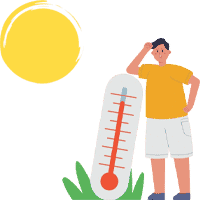 Heat stress is a serious health condition that can occur during any time of year, but is particularly dangerous during the summer months. Heat stroke, which is the most serious heat-related illness, can lead to death in a matter of hours. That’s why it’s important to know the signs and symptoms of heat stroke, and how to prevent it from happening. In this blog post, we’ll explain everything you need to know about heat stress and how to avoid it.
Heat stress is a serious health condition that can occur during any time of year, but is particularly dangerous during the summer months. Heat stroke, which is the most serious heat-related illness, can lead to death in a matter of hours. That’s why it’s important to know the signs and symptoms of heat stroke, and how to prevent it from happening. In this blog post, we’ll explain everything you need to know about heat stress and how to avoid it.
What is Heat Stress?
Heat stress is a condition caused by exposure to excessive heat and humidity. It can be dangerous if not properly treated, as it can lead to heat stroke, an illness that can kill you in a matter of hours.
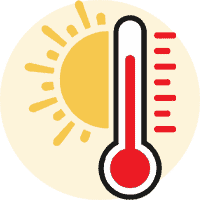 What are the Signs and Symptoms of Heat Stress?
What are the Signs and Symptoms of Heat Stress?
The most common signs and symptoms of heat stress include:
Headache, Fever, Body Aches, Dry Mouth, Muscles Cramps, Dizziness, Nausea, Vomiting, Diarrhea, Heavy Sweating, Red Face, Clay-colored Skin, Slurred Speech, Loss of Appetite, and Trouble Breathing. Take measures to cool yourself down if anyone or more of these symptoms occur: drenched in sweat, feeling faint, or lightheaded increasing thirst nausea, and vomiting
How Can I Avoid Heat Stress in the Workplace?
There are a few things you can do in managing heat stress in the workplace:
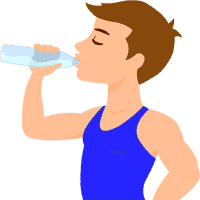 Stay hydrated drink plenty of fluids reduce physical activity when possible wear lightweight, breathable clothing increase air ventilation during hot weather keep an eye on employees who seem particularly at risk for heat stroke if they develop any of the signs and symptoms, take them to a hospital immediately.
Stay hydrated drink plenty of fluids reduce physical activity when possible wear lightweight, breathable clothing increase air ventilation during hot weather keep an eye on employees who seem particularly at risk for heat stroke if they develop any of the signs and symptoms, take them to a hospital immediately.
We hope this blog post has been helpful, and that you will remember to stay safe during the summer months by following these simple guidelines.
The dangers to workers of heat stress in the workplace
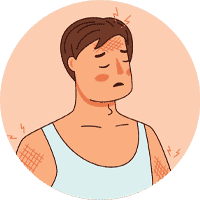 The dangers of heat stress in the workplace are well-known and can be serious, especially for those who suffer from it. Heat stroke is a condition caused by exposure to excessive heat and humidity, which if not properly treated can lead to death within hours. In order to avoid this very dangerous outcome, workers need to know the signs and symptoms of heat stress so they can take appropriate action. This includes drinking plenty of fluids, reducing physical activity as much as possible, and wearing light and air-conditioned clothing.
The dangers of heat stress in the workplace are well-known and can be serious, especially for those who suffer from it. Heat stroke is a condition caused by exposure to excessive heat and humidity, which if not properly treated can lead to death within hours. In order to avoid this very dangerous outcome, workers need to know the signs and symptoms of heat stress so they can take appropriate action. This includes drinking plenty of fluids, reducing physical activity as much as possible, and wearing light and air-conditioned clothing.
While heat stroke is a very rare condition, heat stress is common in the workplace. In hot weather, it’s important to stay hydrated, drink plenty of fluids and avoid physical activity when possible. If you feel overwhelmed or dizzy – any of the classic signs of heat stress – then take yourself to a cool place and rest until the symptoms pass. Finally, be aware of your employees who are particularly at risk for heat stroke; if they develop any of these signs and symptoms, take them to a hospital immediately.
How workers are exposed To Heat Stress
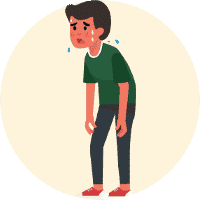 The dangers of heat stress in the workplace come from the fact that workers are exposed to it on a daily basis. Heat stroke is a condition caused by exposure to excessive heat and humidity, which can be found in many workplaces during hot weather. The most common way workers are exposed to heat stress is through their clothing; wearing heavy or tight clothes can cause extreme sweating and dehydration, leading to heat stroke. Other ways employees are exposed to heat stress include: being outside in high temperatures for long periods of time, working in hot environments with no air conditioning or ventilation, and being the only person working in a heat-related environment.
The dangers of heat stress in the workplace come from the fact that workers are exposed to it on a daily basis. Heat stroke is a condition caused by exposure to excessive heat and humidity, which can be found in many workplaces during hot weather. The most common way workers are exposed to heat stress is through their clothing; wearing heavy or tight clothes can cause extreme sweating and dehydration, leading to heat stroke. Other ways employees are exposed to heat stress include: being outside in high temperatures for long periods of time, working in hot environments with no air conditioning or ventilation, and being the only person working in a heat-related environment.
Heat stroke is a medical emergency that can result in death within hours if not treated properly. Workers need to be aware of the signs and symptoms so they can take appropriate action, including drinking plenty of fluids and resting until the symptoms pass.
How to protect workers from Heat Stress
 There are several ways to protect workers from heat stress in the workplace. First, it’s important to stay hydrated and drink plenty of fluids when working in hot weather. Second, avoid physical activity when possible; staying inactive will cause the body to produce more sweat, which can lead to heat stroke. Third, be aware of your employees who are particularly at risk for heat stroke; if they develop any of these signs and symptoms (dizziness, extreme sweating, weakness), take them to a hospital immediately. Finally, make sure your workplace is equipped with air conditioning and ventilation; without these cooling systems, workers can quickly become heat stroke victims.
There are several ways to protect workers from heat stress in the workplace. First, it’s important to stay hydrated and drink plenty of fluids when working in hot weather. Second, avoid physical activity when possible; staying inactive will cause the body to produce more sweat, which can lead to heat stroke. Third, be aware of your employees who are particularly at risk for heat stroke; if they develop any of these signs and symptoms (dizziness, extreme sweating, weakness), take them to a hospital immediately. Finally, make sure your workplace is equipped with air conditioning and ventilation; without these cooling systems, workers can quickly become heat stroke victims.
Sun Safety at Work: Employers
 When heat stroke occurs, it’s important to remember that the sun is a major contributor. Sun exposure can cause heat stroke by raising body temperature and making people more susceptible to dehydration and heat exhaustion. Make sure your employees use sunscreen when working outside and avoid being in the direct sunlight for long periods of time. Also, be sure to provide water and rest breaks during hot weather days so workers can rehydrate and cool down.
When heat stroke occurs, it’s important to remember that the sun is a major contributor. Sun exposure can cause heat stroke by raising body temperature and making people more susceptible to dehydration and heat exhaustion. Make sure your employees use sunscreen when working outside and avoid being in the direct sunlight for long periods of time. Also, be sure to provide water and rest breaks during hot weather days so workers can rehydrate and cool down.
Preventing Heat Stress at Work
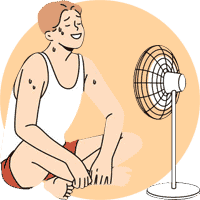 There are a few things you can do to help prevent heat stress in the workplace. First, make sure your employees stay hydrated and drink plenty of fluids when working in hot weather. Second, avoid physical activity when possible – this will help the body produce less sweat, and heat stroke is more likely to occur. Third, equip your workplace with air conditioning and ventilation systems in case of extreme heat conditions – without these cooling systems, workers may become heat stroke victims. Finally, be aware of the signs and symptoms of heat stroke and take any employees who exhibit them to a hospital as soon as possible.
There are a few things you can do to help prevent heat stress in the workplace. First, make sure your employees stay hydrated and drink plenty of fluids when working in hot weather. Second, avoid physical activity when possible – this will help the body produce less sweat, and heat stroke is more likely to occur. Third, equip your workplace with air conditioning and ventilation systems in case of extreme heat conditions – without these cooling systems, workers may become heat stroke victims. Finally, be aware of the signs and symptoms of heat stroke and take any employees who exhibit them to a hospital as soon as possible.
Causes of heat stress
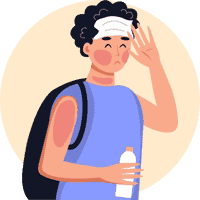 Heat stress in the workplace can occur when the body’s heat-generating capabilities are taxed beyond its ability to cope. This can happen for a variety of reasons, including:
Heat stress in the workplace can occur when the body’s heat-generating capabilities are taxed beyond its ability to cope. This can happen for a variety of reasons, including:
– excessive physical activity in hot weather
– working without proper cooling or ventilation systems in hot weather
– being exposed to high levels of heat (such as from an open flame)
Preventing heat stress in the workplace is important to protect your employees’ health and safety.
Heat exhaustion
 Heat exhaustion is a condition in which the body’s heat-generating capabilities are taxed beyond its ability to produce enough cool blood. The symptoms of heat exhaustion include:
Heat exhaustion is a condition in which the body’s heat-generating capabilities are taxed beyond its ability to produce enough cool blood. The symptoms of heat exhaustion include:
– thirst
– fatigue
– muscle cramps or spasms
– tingling and numbness in the hands and feet
Heat exhaustion can occur when the body’s temperature reaches104 degrees F (40 degrees C). If you think your employees may be experiencing heat exhaustion, take them to a cooler area and provide water, sports drinks, and electrolytes (such as salts) to re-hydrate them. If heat exhaustion is severe, the employee may need medical attention.
 Heat stroke
Heat stroke
Heat stroke is a condition in which the body’s temperature rises too high due to extreme heat exposure, such as from working in hot weather without proper cooling or ventilation systems. The symptoms of heat stroke include:
 Hot and Dry skin
Hot and Dry skin
Rapid heart rate, dry mouth, fainting, dizziness, extremely high body temperature (103° F [39° C]). Heat stroke can be fatal if not treated quickly. Take any employees who exhibit heat stroke to a hospital as soon as possible.
 Preventing heat stress in the workplace is important to protect your employees’ health and safety. Here are some tips to help you prevent heat stress in the workplace:
Preventing heat stress in the workplace is important to protect your employees’ health and safety. Here are some tips to help you prevent heat stress in the workplace:
– Make sure all cooling and ventilation systems are working properly, and keep them up to date
– Make sure employees are properly hydrated and take breaks when necessary
– Wear light, air-conditioned clothing when possible.
 Heat Cramps
Heat Cramps
Heat cramps are a common and usually temporary condition in which muscle spasms occur as the body tries to cool itself. Heat cramps can be caused by extreme heat, dehydration, or exhaustion. Symptoms of heat cramps include:
– muscle pain and tenderness
– tingling and numbness in the hands and feet
A rapid heart rate heat cramps can be mild or severe, but they typically go away on their own after a few minutes. If you think your employees may be experiencing heat cramps, make sure they get water and ice to drink and rest until the cramps subside.
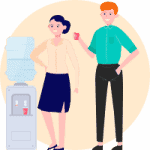 Plan ahead to reduce heat stress
Plan ahead to reduce heat stress
Preventing heat stress in the workplace is important to protect your employees’ health and safety. But it’s also important to plan for hot weather conditions, so you can reduce the risk of heat stroke or heat cramps. Here are some tips to help you prepare for hot weather:
– Set cooling and ventilation systems up properly
– Make sure employees are hydrated and take breaks when necessary
– Wear light, air-conditioned clothing when possible.
Design your workplace to reduce heat stress
 Reducing heat stress in the workplace is important, but it’s also important to design your workplace to reduce the risk of heat stroke or heat cramps. Here are some tips:
Reducing heat stress in the workplace is important, but it’s also important to design your workplace to reduce the risk of heat stroke or heat cramps. Here are some tips:
– Use light and air-conditioned materials
– Install cooling and ventilation systems properly
– Make sure employees are well-trained on how to avoid Heat Stress.
How does the human Body React to Hot Environments?
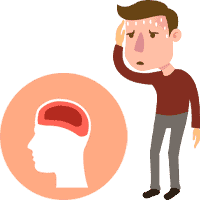 When the body is exposed to hot temperatures, it initiates a series of physiological reactions in an attempt to maintain internal temperature and avoid heat stroke or heat cramps. The body starts by releasing sweat from its skin. Sweat contains water and salt, which helps cool the body down. Blood flow increases in the extremities (the hands and feet), as well as other areas of the body that are cooler than core temperature. In addition, blood vessels close off so that less blood reaches the surrounding tissues, which slows heat loss. The body’s core temperature gradually rises, and the heart rate increases in an effort to circulate more blood. These reactions will continue until the body reaches a safe level of heat exhaustion or heat stroke.
When the body is exposed to hot temperatures, it initiates a series of physiological reactions in an attempt to maintain internal temperature and avoid heat stroke or heat cramps. The body starts by releasing sweat from its skin. Sweat contains water and salt, which helps cool the body down. Blood flow increases in the extremities (the hands and feet), as well as other areas of the body that are cooler than core temperature. In addition, blood vessels close off so that less blood reaches the surrounding tissues, which slows heat loss. The body’s core temperature gradually rises, and the heart rate increases in an effort to circulate more blood. These reactions will continue until the body reaches a safe level of heat exhaustion or heat stroke.
 Does everyone React to Heat the Same Way?
Does everyone React to Heat the Same Way?
No, not everyone reacts to heat the same way. Some people may experience mild symptoms such as light sweating and a slightly elevated heart rate, while others may experience more severe symptoms such as dizziness or fainting. It’s important for employees to know how to react if they experience any of these signs of heat exhaustion or heat stroke so that they can get medical attention quickly.
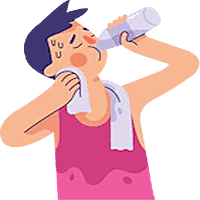 What are the illnesses caused by heat exposure?
What are the illnesses caused by heat exposure?
Heat stroke is the most serious heat-related illness and can be fatal. Other heat-related illnesses include heat exhaustion, which is a more mild condition, and heat cramps, which are a type of muscle cramp caused by extreme stress or dehydration.
What are the symptoms and first aid steps for heat stroke?
 The first symptoms of heat stroke are usually a hot, dry body and rapid heart rate. If left untreated, heat stroke can lead to confusion, dizziness, fainting spells, and seizures. To treat heat stroke:
The first symptoms of heat stroke are usually a hot, dry body and rapid heart rate. If left untreated, heat stroke can lead to confusion, dizziness, fainting spells, and seizures. To treat heat stroke:
– Remove all clothing if possible
– Fan the person with cool water or ice packs
– Call 911
 Risk factors
Risk factors
The risk of heat stroke increases in people who are overweight has a medical condition that makes them more susceptible to heat-related illness or are elderly.
 When to see a doctor
When to see a doctor
If someone experiences heat stroke, they should see a doctor as soon as possible.
Top 12 warning signs of heat stroke
 – hot, dry body
– hot, dry body
– high heart rate
– dizziness or fainting
– rapid breathing
– confusion
– muscle cramps (especially in the neck, shoulders, or stomach)
– nausea and vomiting
– sweating but no water loss
– cool, pale skin
– heavy sweating
– nausea or vomiting
– confusion
FAQs about Heat Stress
 What are the symptoms of heat exhaustion?
What are the symptoms of heat exhaustion?
The first signs of heat exhaustion may include feeling hot and sweating, dizziness, lightheadedness, nausea or vomiting, and a rapid heart rate. Heat exhaustion is a condition in which body temperature rises to an extreme level and causes fatigue or mild confusion. To treat heat exhaustion:
– Remove all clothing if possible
– Fan the person with cool water or ice packs
– Call 911
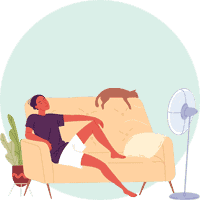 What if someone is feeling ill from heat exposure?
What if someone is feeling ill from heat exposure?
If someone is feeling ill from heat exposure, they should be taken to a cooler environment and treated for heat exhaustion or heat stroke.
 What can be done to prevent heat stress?
What can be done to prevent heat stress?
Preventing heat stress in the workplace can include:
– Making sure employees are properly hydrated
– Adequately cooling down employees during hot weather conditions
– Providing shade and water breaks
 Lone worker heat stress
Lone worker heat stress
If an employee is working alone, they are at a greater risk of heat stress. Heat stroke can occur in as little as 30 minutes without air-conditioning or water cooling. What should be done if heat stress is experienced?
If heat stress is experienced, employees should remove all clothing and fan themselves with cool water or ice packs. If the condition worsens, they may need to go to a cooler environment for treatment.
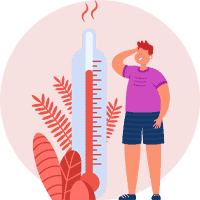 Consider a Lone Worker Safety Solution
Consider a Lone Worker Safety Solution
Our heat stress solutions can help protect employees from the harmful effects of heat in the workplace. Heat stroke and heat exhaustion are both serious conditions that can occur quickly, so it’s important to have a plan for protecting employees from these hot weather dangers.
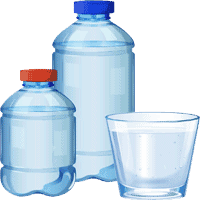 Managing water
Managing water
An important part of heat stress prevention is managing water intake and hydration. Employees who are dehydrated can experience a number of serious health effects, including heat stroke and heat exhaustion. Properly hydrated employees are less likely to experience these hot weather dangers.
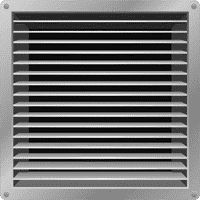 Providing ventilation
Providing ventilation
Providing adequate ventilation is also important for heat stress prevention. Low humidity, hot air, and exhausted employees can all lead to heat stroke. By providing good ventilation, employers can help keep their employees cool and safe during hot weather conditions.
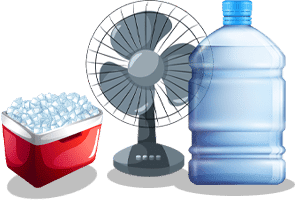 Things you can do to cool someone down
Things you can do to cool someone down
There are a number of things that employees can do to cool themselves down during hot weather conditions. Fans, ice packs, and fans with water cooling capabilities can all help to keep employees cooler and more comfortable.
ADMINISTRATIVE CONTROLS
 – Ensure that all heat stress symptoms are promptly reported and assessed
– Ensure that all heat stress symptoms are promptly reported and assessed
– Maintain temperature and humidity levels in the workplace as close to normal as possible
– Eliminate or reduce opportunities for heat stress
– Provide appropriate heat stress relief and cooling measures when needed.
WORK PRACTICE CONTROLS
 – Ensure that all employees are properly trained and aware of heat stress hazards
– Ensure that all employees are properly trained and aware of heat stress hazards
– Provide regular water breaks and adequate hydration during hot weather conditions
– Encourage daily physical activity, especially in the early morning hours when temperatures are cooler
– Provide appropriate cooling facilities and devices, such as fans, ice packs, and water coolers.
COOLING PPE
 – Wear a hat and sunglasses
– Wear a hat and sunglasses
– Avoid prolonged exposure to the sun or heat stroke risk
– Use cooling devices, such as fans and ice packs.
– Wear light-colored, cool clothing
EDUCATION & TRAINING
 – Employees should be properly trained in heat stress hazards and cooling measures
– Employees should be properly trained in heat stress hazards and cooling measures
– Provide heat stress information and training to employees on an ongoing basis
– institute hot weather safety protocols and heat stress relief measures
– Maintain heat stress response plans and related records
How do I know if I am suffering from heat stress at work?
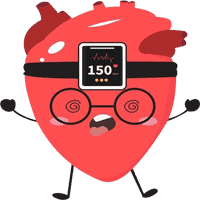 There are a number of symptoms to watch for when heat stress is suspected. Symptoms may include:
There are a number of symptoms to watch for when heat stress is suspected. Symptoms may include:
-Fainting
-Rapid heart rate
-Dizziness and lightheadedness
-Nausea and vomiting
– Heat exhaustion or heat stroke
What should I do to reduce the effects of heat stress on my body and mind?
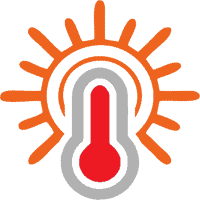 There are a number of steps that employees can take to reduce the effects of heat stress on their body and mind:
There are a number of steps that employees can take to reduce the effects of heat stress on their body and mind:
– Maintain temperature and humidity levels in the workplace as close to normal as possible
– Eliminate or reduce opportunities for heat stress
– Provide appropriate heat stress relief and cooling measures when needed.
What are the signs of heat stress?
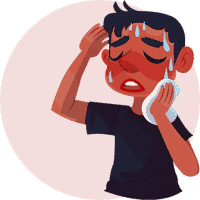 The following are signs of heat stress:
The following are signs of heat stress:
– Reduced ability to work or concentrate
– Heavy sweating
– Headache and dizziness
 Is there a “right to refuse” work in this kind of heat?
Is there a “right to refuse” work in this kind of heat?
There is no “right to refuse” work in this kind of heat, as heat stroke and other Heat Stress-related illnesses can occur from refusing to take precautions. It is important for employees to be properly trained on the signs and symptoms of Heat Stress, how to reduce the effects of stress on their body, and what cooling measures are available in the event that heat stress does occur.
 What are the effects of extreme heat?
What are the effects of extreme heat?
Extreme heat can lead to Heat Stress-related illnesses, such as heat stroke and heat exhaustion. These illnesses may cause serious health problems, including death.



